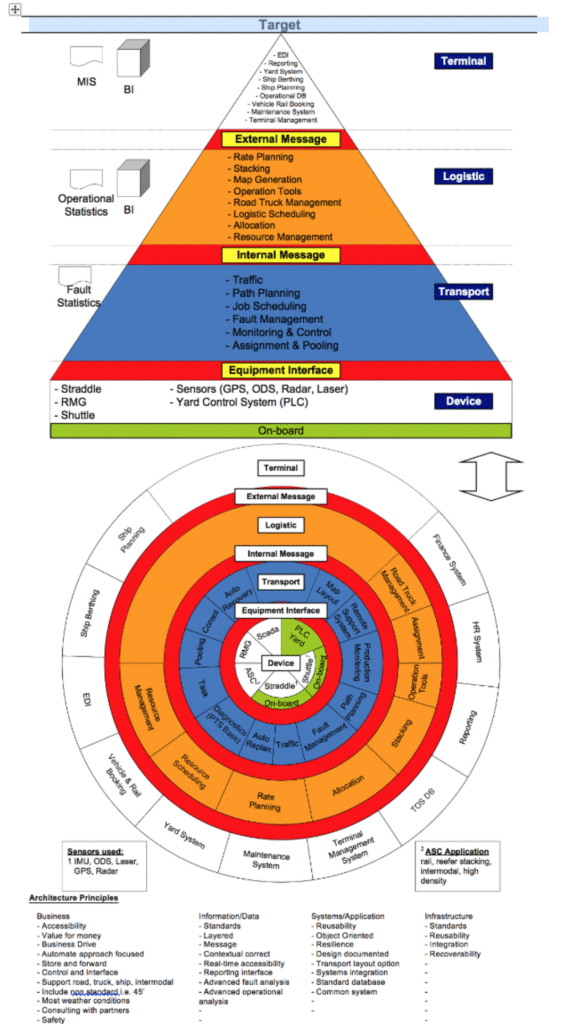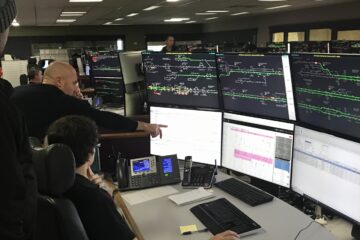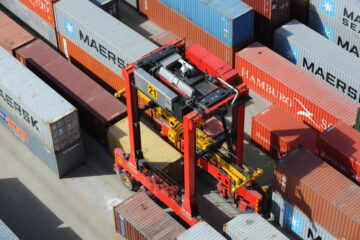What is shown below represents all of the software components fully integrated into a solution that in 2010 could do things others were not even considering. The integration includes sensors, actuators, on-board navigation and control systems, overall planning, scheduling, dispatching, yard management, real-time autonomous vehicle movement and path optimization. Bear in mind, at the time this also had to be working with manned cranes, which adds another layer of human-machine complexity.
It provides lessons from 10 years ago which many adjacent industries could learn a great deal from today.

For the uninitiated, this is called twin-pairing, done autonomously, and ready to be loaded onto the vessel.
In basic terms, the scheduler, dispatcher and optimization engines have determined that the current major performance area to be addressed, in real-time, is the rate at which twenty foot containers are being loaded onto the vessel. So, at the cost of utilizing more straddle carriers, 2 x 20 foot containers are being set up under the back reach of the crane, ready to be loaded in a single lift.
The precision, planning, and real time optimization occurring behind this is staggering.
But the real magic is that it makes the terminal more productive, and not even manual terminals could achieve it!
This is dual cycling with double stacking, Again, productivity is the result.
Here the longer term planning, then scheduler, dispatcher and optimization engines have determined that there is an opportunity to ensure the quay cranes are both loading and unloading at the same time. And just to push the quay cranes that bit harder, containers are being double stacked. Quite a non-trivial task in any container terminal. Being done seamlessly and fully autonomously.
Now here is something pretty special. For one crane move, you are achieving three container moves, through dual cycling and twin pairing (mixed container sizes). If the system had found an opportunity to dual cycle and double twin-pair ( 2 20 foot containers in both lanes under the crane back reach), you could be getting four for the price of one quay crane cycle!
Now if you really want to know what is behind this, check this link out. Other adjacent industries think that they are breaking new ground with their solutions today in relation to industrial autonomy (rail for instance). This is an order of magnitude more complex and capable, from 2010. But the funding, accountability for full integration, program management, IP ownership and multi-vendor, multi-discipline high performance team development was crucial in order to make this happen. … https://prezi.com/view/Rzi0pwSU7Lo4yuCJGybh/


